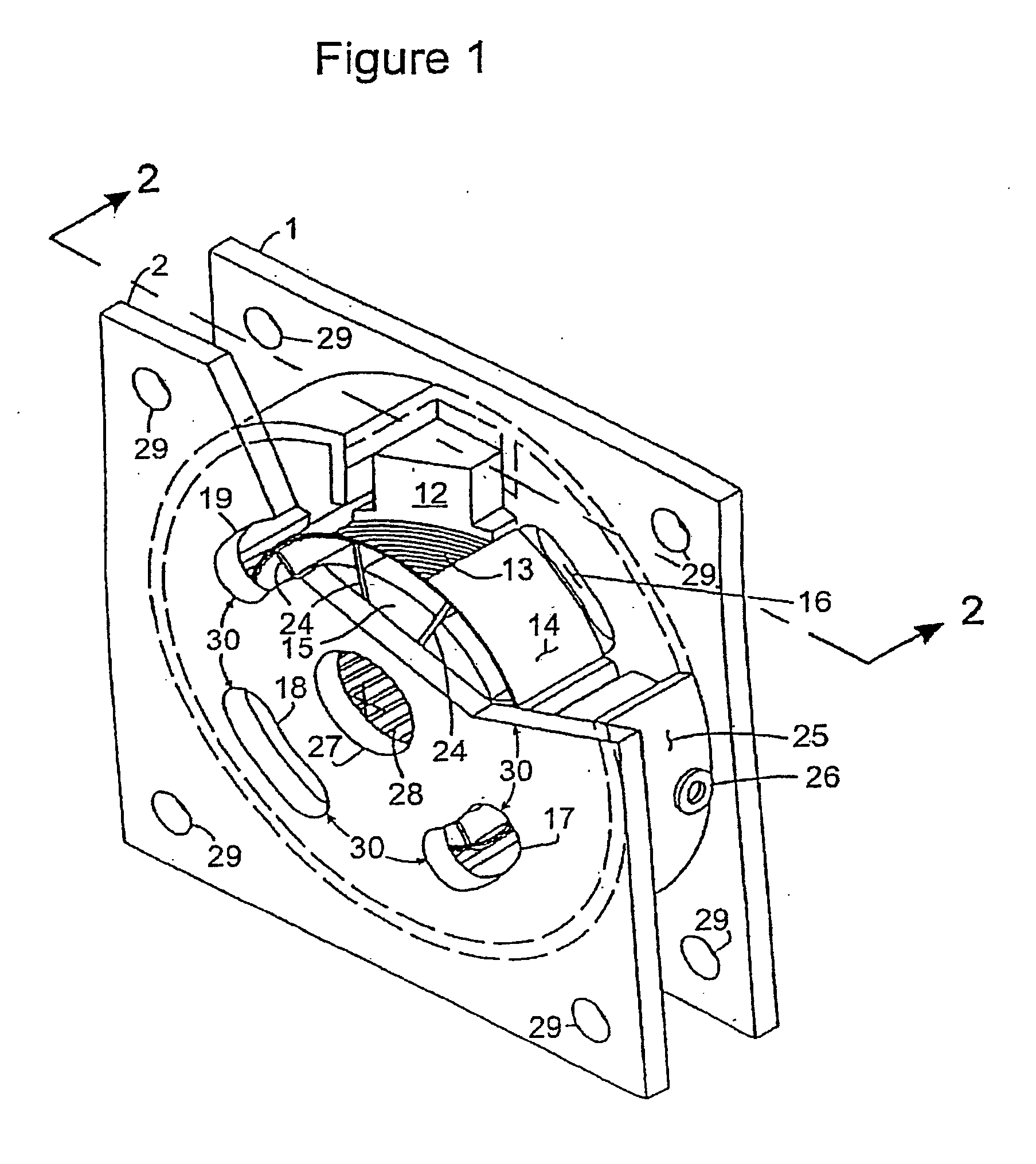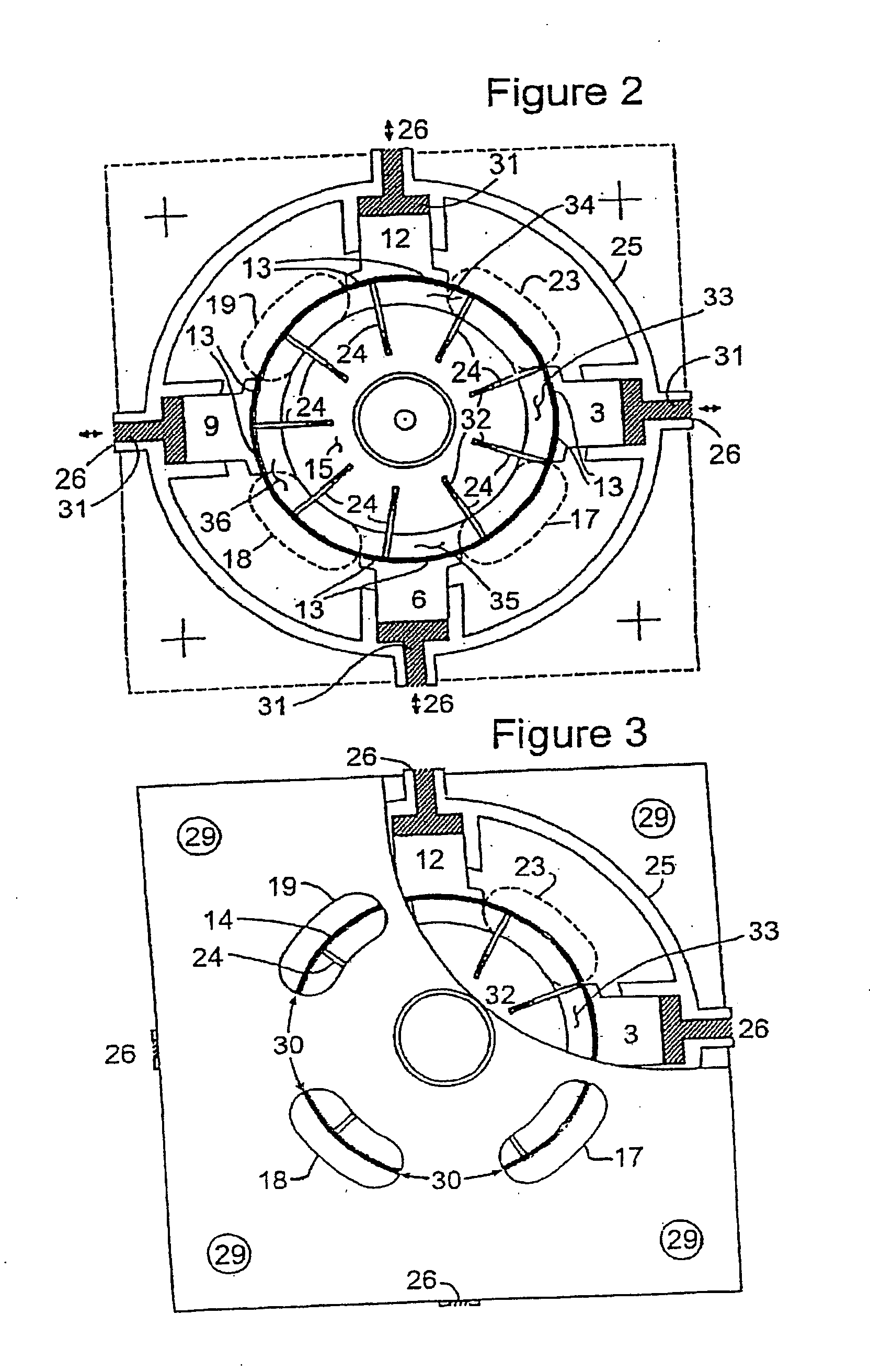Rotary vane pump seal
a technology of rotary vane pump and seal, which is applied in the direction of rotary/oscillating piston pump components, machines/engines, liquid fuel engines, etc., can solve the problems of less efficiency than the basic embodiment, and achieve the effect of improving the efficiency of existing vane pump and motor, facilitating digital control, and extending the service li
- Summary
- Abstract
- Description
- Claims
- Application Information
AI Technical Summary
Benefits of technology
Problems solved by technology
Method used
Image
Examples
Embodiment Construction
[0020] The isometric view shown in FIG. 1 has a frontal first quadrant cutaway which exposes some very important features of the invention. The rear end plate 1 is shown with the first quadrant kidney port 16 exposed. The front end plate 2 is partially cutaway with the kidney ports 17, 18, and 19 respectively in the second, third, and fourth quadrants showing. The rear end plate 1 has like kidney ports 20, 21, and 22 in axial alignment with ports 17, 18, and 19, but those ports in plate 1 are out of view in this drawing. This view shows like kidney ports front and back. However, it is only necessary to have one port per quadrant chamber to allow for fluid flow into and out of the chamber. Either the front or rear ports can be utilized, or both can be used to increase the flow capacity. Also, referring to FIG. 4, any other means of porting which allows fluid to flow into or out of the volume 33, 34, 35, or 36 when they rotate in alignment with “quadrants one, two, two, three, or four...
PUM
 Login to View More
Login to View More Abstract
Description
Claims
Application Information
 Login to View More
Login to View More - R&D
- Intellectual Property
- Life Sciences
- Materials
- Tech Scout
- Unparalleled Data Quality
- Higher Quality Content
- 60% Fewer Hallucinations
Browse by: Latest US Patents, China's latest patents, Technical Efficacy Thesaurus, Application Domain, Technology Topic, Popular Technical Reports.
© 2025 PatSnap. All rights reserved.Legal|Privacy policy|Modern Slavery Act Transparency Statement|Sitemap|About US| Contact US: help@patsnap.com



